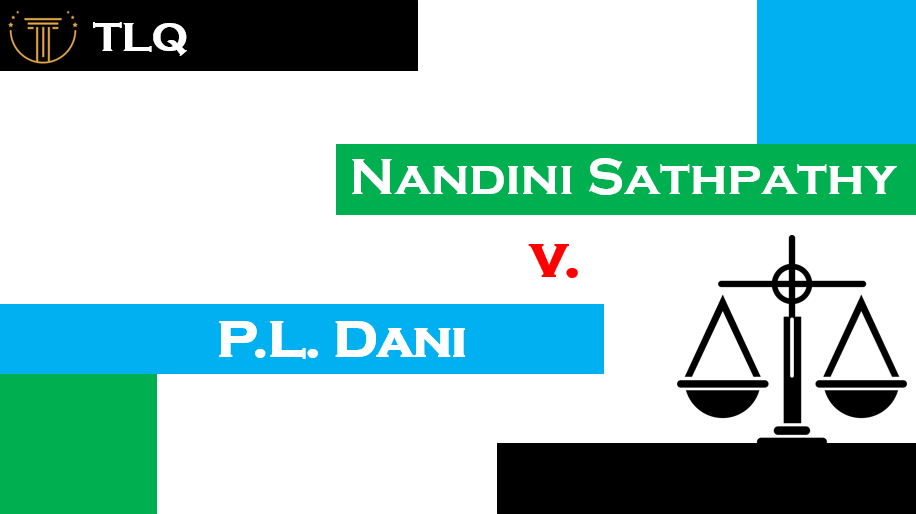Published On: 8th September, 2024
INTRODUCTION
Marriage is an integral part of our society; it plays a vital role in the life of an individual. In Hinduism, marriage is a sacrament, it is not just a union of two people but of two souls, it is more or less a Sanskar. Whereas, Muslims believes marriage to be a contract. Though there could be contrasting beliefs, but ultimately, marriage is a union between a man and a woman and that it is a social sanction. Dr. Radhakrishnan (former President of India) observed that marriage is not a mere convention, but an implicit condition of human society. A marriage is not an event for ‘song and dance’ and ‘wining and dining’ or an occasion to demand and exchange dowry and gifts, a marriage is not a commercial transaction. The solemn foundational event is celebrated to forge a bond between a man and a woman who will eventually become husband and wife in an evolving family, which is the fundamental unit of Indian society.[1] In India, arranged marriages are prevalent, which includes the parents of two individuals who discuss, decides and finalize the marriage. This type of marriage is predominantly accepted by the Indian households. In spite of that, love marriage which was considered as a western concept is increasingly carving out its place in society. It is a kind of marriage where two individuals choose their partners based on compatibility, care and affection and decide to live together for the rest of their lives.
However, interfaith marriage is still a societal stigma and faces backlash in the society. In such a marriage, two individuals from different religion ties knot to fulfil matrimonial obligations. Inter-religious and inter-caste marriages fetter due to violence, community-boycott and honour killings.
This article will undertake the multifarious aspects of marriage laws in India with a brief evaluation of Special Marriage Act and elucidate its significance in the realm of interfaith marriages.
KEY WORDS- Marriage, Inter-Faith marriage, Inter-religion marriage, Hindu Marriage Act, 1955 Muslim Laws, Christian Laws, Parsi Law, Special Marriage Act,1954
HISTORICAL BACKGROUND AND EVOLUTION OF INTER-RELIGIOUS MARRIAGE
In ancient Hindu society, there were eight forms of marriage which were prevalent out of which four were approved and the rest were forbidden. From the latter one, Gandharva vivah a marriage which involves the voluntary union of a maiden and her lover does not have approval from society, and was considered to be against Patria Potestas[2], though unapproved was practised in secrecy. Nonetheless, with time scenarios changed due to social and religious factors, Love marriage is now an accepted form of marriage. Moreover, the Indian Constitution Guarantees the right to freedom of religion[3] and the right to choose one’s partner, and these rights have been upheld in several landmark cases. In recent years, there have been several couples who have chosen to get married in the Gandharva style have faced opposition from their families and society. However, the courts have upheld their right to choose their partner and validated their union.[4] An interesting aspect of Gandharva Vivah is that it is beyond any caste, creed or religion. Anyone regardless of their social stratum can choose to get married in that regard as long as they possess mutual love for each other.
MARRIAGE LAWS IN A NUTSHELL
Like the diversified religions, cultures, caste and creed, India has different marriage laws for Hindus, Muslims, Christians and Parsis. Let us see the substance of all the laws:
HINDU MARRIAGE LAW
Hindus are in majority hence, Hindu Marriage the most famous form of marriage. Though there is also much variation in the Hindu religious customs in accordance with the regions and communities, the overall customs remain same throughout. The Hindu Marriage Act, 1955[5] is applicable on Hindus, Buddhists, Jains and Sikhs. Though Sikhs, Buddhists and Jains have different rituals for their wedding still they are governed by the umbrella law i.e. The Hindu Marriage Act, 1955.
Features of the Act
- The Act amend and codify the law relating to marriage among Hindu and also applies to Buddhists, Jains or Sikhs.
- The Section-5 of the Act prohibits the practice of bigamy also the bride and the groom should be capable of giving valid consent, must be of sound mind. The valid age to get married provided under the Act is 21 years for the male and 18 years for the female. Further, both the parties should not relate to each other within the degree of prohibited relations and are not sapindas to each other.[6]
- The Section-7 of the Act states that the marriage may be solemnized by following customary rites and ceremonies which includes Saptapadi which means taking seven steps by the groom and the bride jointly before the sacred fire, and after the completion of the seventh step the marriage is considered to be complete and binding.[7]
“Therefore, requisite ceremonies for the solemnisation of the Hindu marriage must be in accordance with the applicable customs or usage and where saptapadi has been adopted, the marriage becomes complete and binding when the seventh step is taken. Where a Hindu marriage is not performed in accordance with the applicable rites or ceremonies such as saptapadi when included, the marriage will not be construed as a Hindu marriage.”[8]
- The marriage should not necessarily be registered it is upon the discretion of the State to make registration mandatory.[9]
MUSLIM MARRIAGE LAW
Unlike in Hindus where marriage is considered to be a sacrament, in Muslims a marriage is a contract termed as Nikah, an Arabic term used for marriage which means Contract. ‘A contract that results in the man and woman living with each other and supporting each other within the limits of what has been laid down for them in terms of rights and obligations.’ [10] The Muslim personal laws are not codified hence gives legal officials little firm ground on which to adjudicate Muslim personal laws, and allows the perpetuation of ‘customary practices divergent from the values and principles of the Qur’an.[11]
Features or Essential of Muslim Marriage
- There are three types of marriages in Muslim law- valid marriage i.e. Sahih, irregular marriage i.e. fasid, void marriage i.e. batil.
- There should be proposal and acceptance (Qubul) by the parties and must be done in one sitting.
- The parties must be competent i.e. they must be sane and adult.
- There must be two male or one male and two female witnesses, who must be sane and adult Muslims, present and hearing during the marriage proposal and acceptance.
- Under Muslim Law the marriage contract is not required to be reduced in writing and an oral marriage is also valid.[12]
- Though the registration of Muslim marriage is not mandatory yet it done and the legal document is known as the Nikah-nama.
Christian Marriage Law
After the arrival of Britishers in India, Common law was made applicable in India which was based on equity, justice, and good conscience on subjects like marriage and divorce among Chirstian communities. The British parliament passed the Indian Christian Marriage Act, 1872 for Indian Christians.
Features of the Act
- The Indian Christian Marriage Act, 1872[13], codifies matrimonial law among Christians.
- State government may grant license to any Christian for authorizing marriage certificate[14].
- The age of male should not be under 21 years and a female should not be under 18 years of age. Neither of them shall have a wife or husband still living. In presence of person stated under section-9 and two credible witnesses, each party must accept each other as their better half[15].
- Marriage solemnized between persons, where one or both, is or are, Christian, must be in accordance with Section-5 otherwise it shall be void[16].
- The certificate of marriage is granted once the marriage is solemnized and after paying prescribed fee with the declaration signed by authorities making certificate as well as the parties and act as evidence for valid marriage[17].
Parsi Marriage Law
Compared to the other religions in country, the population of Parsis is very low, yet the Parsi rituals and traditions hold a distinct identity in Indian society. The Parsi Marriage and Divorce Act, 1936[18] regulates the matrimonial law among Parsis.
Features of the Act
- Parties should not be related to each other in any of the degrees of consanguinity or affinity as stated in Schedule 1. The ceremony of ‘Ashirvad’ must be in the presence of priest and two Parsi witnesses. A child born out of such marriage shall be legitimate[19].
- The remarriage shall be held unlawful if done in the lifetime of spouse or previous marriage was not dissolved[20]. Hence, the Parsi law opposes bigamy.[21]
- The marriage solemnized under the Act shall be registered and certified by priest which should be signed by the contracting parties and two witnesses.[22]
THE SPECIAL MARRIAGE ACT:
An analysis in the light of Interfaith Marriages in India
As stated earlier interfaith or interreligious marriage is the union of couples from diverse religious origins, it is also known as ‘mixed marriage’. The Special Marriage Act allows a wedlock between couples irrespective of their caste, creed and religion without having to convert.
Marrying someone outside the religion is still a taboo in our country. Slowly and gradually in cities inclusivity regarding such marriage can been seen but the rural areas are still not ready to accept such marriage. The Allahabad High Court has reiterated that There has been a steep rise in intercommunity, intercaste and interfaith marriage/relationship, which has exploded specially in the last few decades. The society since 1950 has considerably evolved and the relationships, be it interfaith, inter culture, requires a comprehensive Family Code which is in conformity with the changing times[23].
Provisions under the Act-
The Special Marriage Act, 1954[24] provide a special form of marriage in certain cases, for the registration of such and certain other marriages and for divorce.
- The notice of marriage should be given by the parties when a marriage is intended to be solemnized under this Act.[25]
- Conditions pertaining in the Act regarding the solemnization of special marriages are-
- Neither party should have a living spouse
- The parties must be capable of giving a consent i.e. they must be sane
- The male must have completed the age of 21 years and the female the age of 18 years
- Parties must not come under any degrees of prohibited relationships[26]
If any of the conditions precedent are not fulfilled the marriage shall be null and void.[27]
- Within 30 days of notice any person may raise an objection to marriage on ground of contravention of section 4.[28]
- Section 13 of the Act provides for the certification of marriage where marriage once solemnized, the Marriage Officer enter a certificate, which shall be deemed to be conclusive evidence.[29]
It is noteworthy to mention that the special marriage act provides the protect and freedom to get married to the inter-caste, interfaith, inter religious couples but not to the couples of LGBTQIA+ as it is the matter of legal debate and was not legalised by the Supreme Court of India in the case of Supriyo v Union of India.[30]
Issues and Court Judgement
- Sarla Mudgal v Union of India[31], in this case the Supreme Court Addressed the issue of bigamy and conversion to Islam for the purpose of remarriage. Further the court stated that the Special Marriage Act clearly only contemplates monogamy and a person married under the Act cannot escape from its provisions by merely changing his religion.
- Lata Singh v State of UP[32], in this case Supreme Court upheld the right of an adult woman to marry a person of her choice irrespective of caste, and hence underlining the protection given under the Special Marriage Act.
- Shafin Jahan v Asokan K.M.[33], also known as the Hadiya case, reaffirmed right to marry as Fundamental Right under Article 21 of the Constitution. the Supreme Court validated Hadiya’s marriage under the Special Marriage Act.
The Way Forward:
Despite of its neoteric framework the Special Marriage Act faces challenges. Thus, more accessibility and knowledge of the Act is required particularly in the rural areas where traditional norms predominate.
Additionally, the future of the Act lies in the pursuance and social acceptance by the society. The debate on inclusiveness of same-sex marriage in the Act shows the changing minds as to marriage and equality.
CONCLUSION
In Conclusion, Indian marriage law is a complex tapestry woven from threads of various religious traditions and legal framework. Interfaith marriage, in particular, pose significant challenges to the legal system, hence highlighting the need for more inclusive approach. By analysing the Special Marriage Act, the article show case how important it is to reconcile religious diversity, understanding and adaptation. By this we can promote more harmony and inclusivity in the society where love knows no border.
Reference(s):
[1] Dolly Rani Vs Manish Kumar Chanchal, 2024 (2) CCC 141 (India)
[2] Patria potestas | Roman Empire, Paterfamilias, Slavery | Britannica, https://www.britannica.com/topic/patria-potestas (last visited Jul 4, 2024).
[3] INDIA CONST. art. 25
[4] Why Was Gandharva Vivah Considered As An Unapproved Form Of Marriage In Ancient Times?, https://legalserviceindia.com/legal/article-13200-why-was-gandharva-vivah-considered-as-an-unapproved-form-of-marriage-in-ancient-times-.html.
[5] THE HINDU MARRIAGE ACT, 1955, ACT NO. 25 OF 1955(India)
[6] THE HINDU MARRIAGE ACT, 1955, ACT NO. 25 OF 1955 § 5 (India)
[7] THE HINDU MARRIAGE ACT, 1955, ACT NO. 25 OF 1955 § 7 (India)
[8] Dolly Rani Vs Manish Kumar Chanchal, 2024 (2) CCC 141 (India)
[9] THE HINDU MARRIAGE ACT, 1955, ACT NO. 25 OF 1955 § 8 (India)
[10] Muslim Marriage in India, https://www.legalserviceindia.com/article/l418-Muslim-Marriage.html.
[11] Patrick Oliver Ott, UNCITRAL – United Nations Commission On International Trade Law, in A Concise Encyclopedia of the United Nations 692 (Helmut Volger ed., 2010), https://brill.com/view/book/edcoll/9789047444541/Bej.9789004180048.i-962_122.xml.
[12] Raisuddin vs Gulshan, 2016 (3) ADR 705, (2016) (India)
[13] THE INDIAN CHRISTIAN MARRIAGE ACT, 1872, ACT NO. 15 OF 1872, (India)
[14] THE INDIAN CHRISTIAN MARRIAGE ACT, 1872, ACT NO. 15 OF 1872, § 9 (India)
[15] THE INDIAN CHRISTIAN MARRIAGE ACT, 1872, ACT NO. 15 OF 1872, § 60 (India)
[16] THE INDIAN CHRISTIAN MARRIAGE ACT, 1872, ACT NO. 15 OF 1872, § 5 (India)
[17] THE INDIAN CHRISTIAN MARRIAGE ACT, 1872, ACT NO. 15 OF 1872, § 61 (India)
[18] THE PARSI MARRIAGE AND DIVORCE ACT, 1936 ACT NO. 3 OF 1936 (India)
[19] THE PARSI MARRIAGE AND DIVORCE ACT, 1936 ACT NO. 3 OF 1936, § 3 (India)
[20] THE PARSI MARRIAGE AND DIVORCE ACT, 1936 ACT NO. 3 OF 1936, § 4 (India)
[21] THE PARSI MARRIAGE AND DIVORCE ACT, 1936 ACT NO. 3 OF 1936, § 5 (India)
[22] THE PARSI MARRIAGE AND DIVORCE ACT, 1936 ACT NO. 3 OF 1936, § 6(India)
[23] (2022) 1 All LJ 226
[24] THE SPECIAL MARRIAGE ACT, 1954 ACT NO. 43 OF 1954 (India)
[25] THE SPECIAL MARRIAGE ACT, 1954 ACT NO. 43 OF 1954, § 5 (India)
[26] THE SPECIAL MARRIAGE ACT, 1954 ACT NO. 43 OF 1954, § 4 (India)
[27] THE SPECIAL MARRIAGE ACT, 1954 ACT NO. 43 OF 1954, § 24 (India)
[28] THE SPECIAL MARRIAGE ACT, 1954 ACT NO. 43 OF 1954, § 7 (India)
[29] THE SPECIAL MARRIAGE ACT, 1954 ACT NO. 43 OF 1954, § 13 (India)
[30] Supriyo @ Supriya Chakraborty & Anr. vs. Union of India AIR (2018) SC 4321
[31] Smt. Sarla Mudgal, President, Kalyani & … vs Union of India & Ors, A.I.R 1995 S.C. 1531
[32] Lata Singh v State of UP & Anr., (2006) 5 SCC 475
[33] Shafin Jahan v Asokan K.M (2018) 16 SCC 368



